Cedar Creek and Belle Grove National Historical Park in the Shenandoah Valley offers a glimpse into Virginia’s agricultural history and the final pushes to win the Civil War.
Belle Grove Manor House, built of limestone in 1797, overlooks peaceful fields with grazing cows. Just a stone’s throw from U.S. Route 11 near Middletown, Virginia, the manor welcomes tourists to explore its late 18th century architecture, enslaved people’s cemetery, teaching garden and heritage apple orchards.
The home is part of Cedar Creek and Belle Grove National Historical Park, a partnership park with some points of interest run by the National Park Service and others by community partners. The park site was established by Congress 20 years ago.
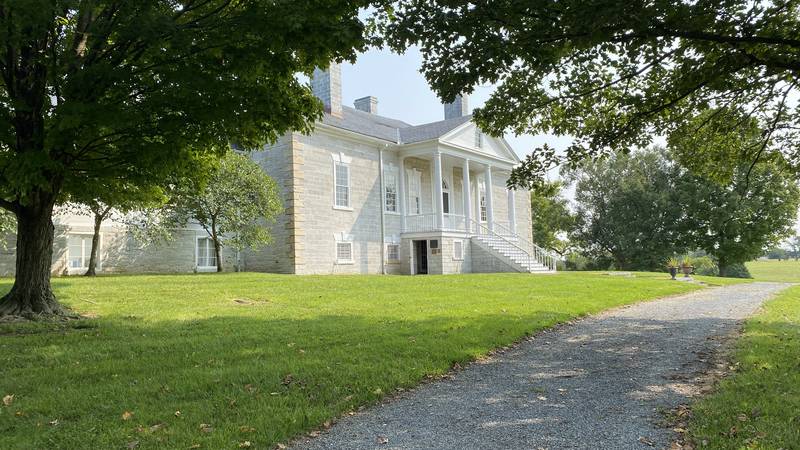
The Belle Grove Manor House today.
Linda Coutant/NPCADuring the Civil War, activity around the manor house differed greatly from today’s scene. Occupation of the home shifted alternately from Union to Confederate officers, and thousands of troops camped on the property as the divided nation fought over slavery and cultural differences.
What makes this park site significant is its relationship to the agricultural landscape of the Shenandoah Valley during the 18th and 19th centuries — including the practice of human enslavement by wealthy landowners — and the decisive Battle of Cedar Creek in 1864.
The breadbasket of the South
The Shenandoah Valley is a long, narrow corridor sheltered by mountains. In the 1700s and 1800s, its fertile soil produced high-quality wheat and flour that was sold throughout the colonies and Europe. Isaac Hite Jr., the son of German immigrants, and his wife Nelly, the sister of President James Madison, established Belle Grove Plantation.
Unlike most Virginia settlers, the Hite family operated their farm, mills, distillery and blacksmith shop with enslaved Blacks — a total of 276 over the 70 years the family lived at Belle Grove Plantation. Isaac Hite’s descendants kept the property until the last owner’s death in 1860.
Hundreds of grain mills dotted the valley along abundant streambeds. The main transportation route for the area’s commerce was an ancient Native American footpath that became known as the Great Wagon Road, now U.S. Route 11. Because the Shenandoah Valley provided central access between northern and southern states, Union and Confederate armies fought over this landscape throughout the war.
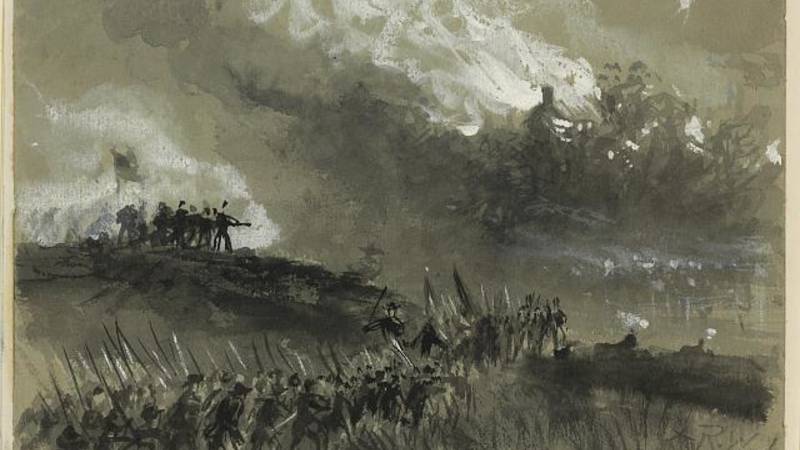
A depiction of “The Burning” in the Shenandoah Valley in September 1864, by Civil War sketch artist Alfred R. Waud.
Library of CongressIn September 1864, a month before the decisive battle known as Cedar Creek, Maj. Gen. Philip Sheridan led 32,000 Union troops in setting ablaze most of the Shenandoah Valley’s grain fields — a stretch 70 miles long and 30 miles wide. Their intention: hasten the end of the war by devastating the valley’s ability to feed Southern residents and their Confederate army. “The Burning,” as it became known, lasted 13 days. It destroyed 2,000 barns and 70 mills with all their contents, with thousands of heads of livestock either killed or driven away.
The Battle of Cedar Creek
During the Union occupation of Belle Grove after The Burning, Sheridan returned to Washington, D.C. His troops remained camped in the fields around the manor house. Using the screen of a foggy dawn Oct. 19, Confederate soldiers under the command of Maj. Gen. Jubal A. Early crossed Cedar Creek and the North Fork of the Shenandoah River to lead a surprise, three-pronged attack.
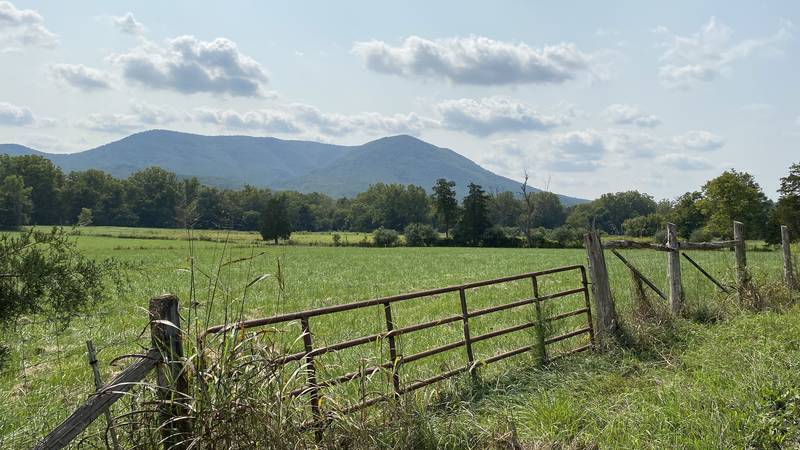
Massanutten Mountain and Signal Knob, from which Confederate scouts looked upon the camped Union army at Belle Grove Plantation and devised their attack plan.
Linda Coutant/NPCABy mid-morning, they had successfully driven the Union army northward. Thinking they had secured Belle Grove, the Confederates celebrated. By sunset, they experienced a shock — the Union troops reappeared, rallied by the return of Sheridan on horseback, and overcame the Confederates. Forced to flee southward into the area devastated by The Burning, they found no food or other resources to strengthen themselves for a comeback.
The Battle at Cedar Creek was among the deadliest fights in the Shenandoah Valley, with more than 7,600 casualties — two-thirds of them Union troops. The reversal of fortune, however, cemented Union control of the Shenandoah Valley and boosted morale among Northern voters. Three weeks later, Abraham Lincoln was reelected president and in another six months, the Civil War ended.
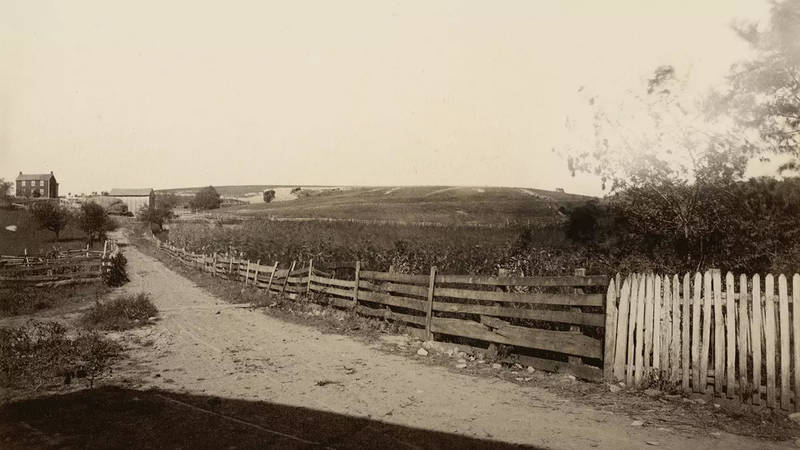
Bowmans Mill Road near Belle Grove Plantation in 1885, just 21 years after the Battle at Cedar Creek.
NPS PhotoDespite having been badly damaged during the war, Belle Grove and other Shenandoah Valley farms recovered. By 1870, wheat production in the Shenandoah Valley returned to pre-war levels. As the grain industry moved to the Midwest at the turn of the 20th century, Virginia farmers focused on apples and cattle as their main commodities — staples that continue to be produced in the valley’s rural areas today. Belle Grove Plantation remains a working farm.
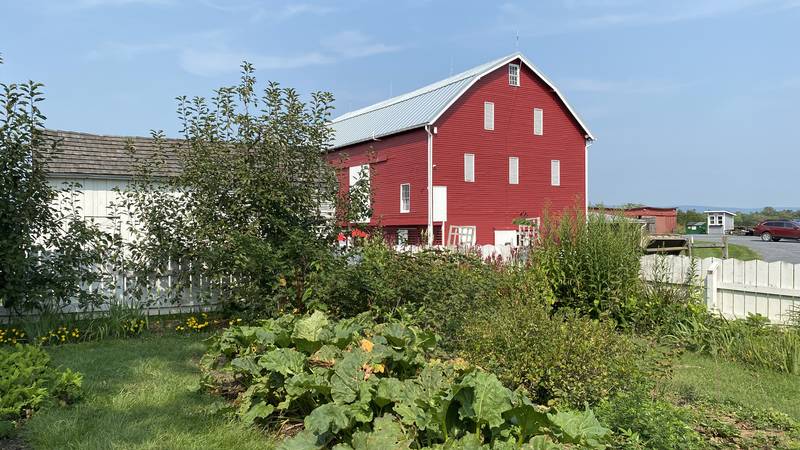
Belle Grove Plantation today includes a teaching garden, foreground, which is maintained by local gardening clubs and master gardeners, and a 1918 barn that houses a welcome center. The barn is a typical Shenandoah Valley design with German influences.
Linda Coutant/NPCAThe National Park Service recently added the site to its National Underground Railroad Network to Freedom in recognition of the enslaved people who liberated themselves from the Belle Grove Plantation before the abolition of slavery.
Learn more about enslavement in the Shenandoah Valley
Stay On Top of News
Our email newsletter shares the latest on parks.
About the author
-
 Linda Coutant Staff Writer
Linda Coutant Staff WriterAs staff writer on the Communications team, Linda Coutant manages the Park Advocate blog and coordinates the monthly Park Notes e-newsletter distributed to NPCA’s members and supporters. She lives in Western North Carolina.
-
General
-
- NPCA Region:
- Mid-Atlantic